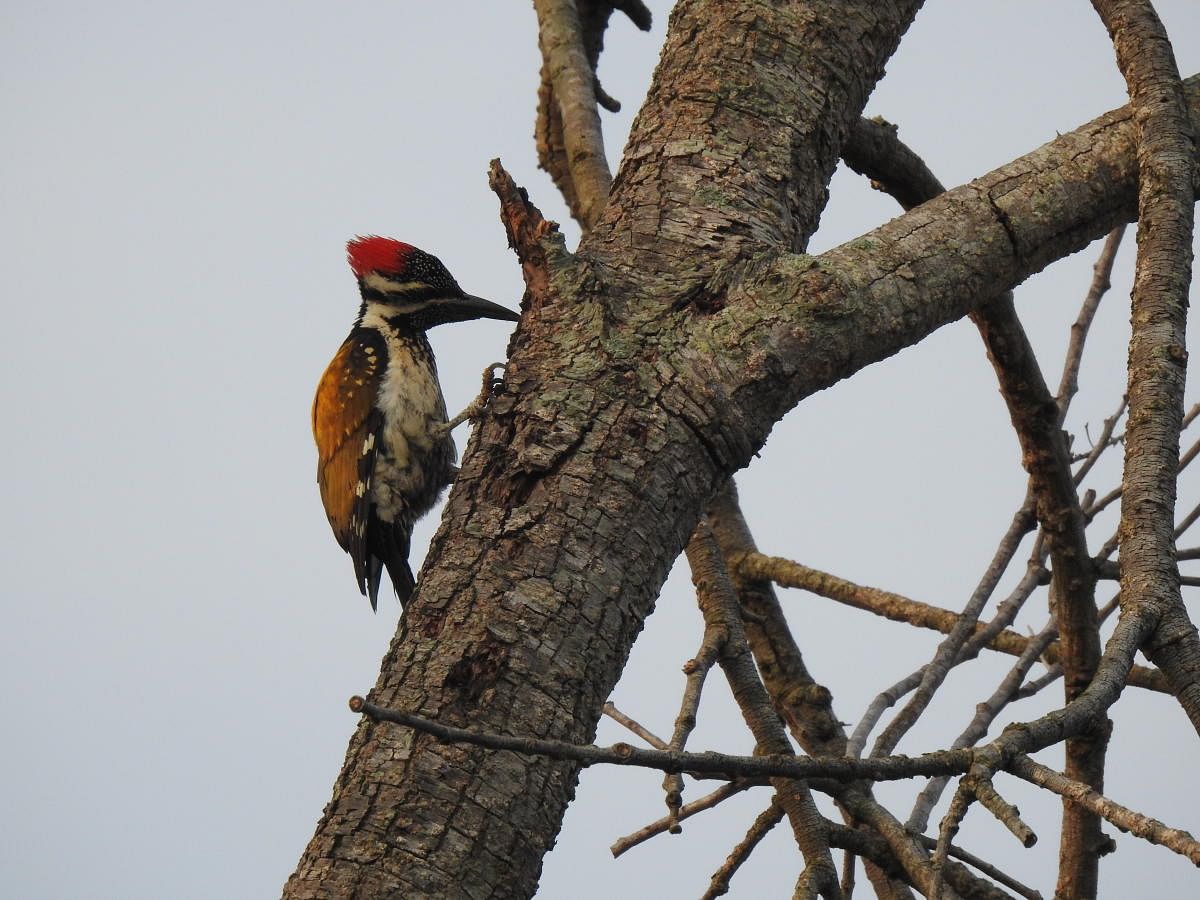
A special tree once lived on Navilu Kaadu, a majestic Shami tree or Banni mara (Prosopis cineraria) with limbs outstretched, as if longing for the vast sky.
Jayamma, the erstwhile owner who received the land as a gift from her father, had planted the Banni mara to enrich the soil, like most farmers of yore did. The Shami tree is leguminous. Its roots harbour rhizobium bacteria that help fix atmospheric nitrogen in the soil. The tree is chock-full of natural healing properties and revered in Hinduism.
The Mahabharata tells the story of the valiant Pandava brothers concealing their celestial weapons on a Banni mara when they had to go incognito in their 13th year of exile after their greedy cousins, the Kauravas, unfairly beat them in a game of dice. The Pandavas came back to the tree on Vijayadashami day after their exile, prayed to it, retrieved their weapons, and went on to defeat their cousins in the Kurukshetra war.
Closer home, it is customary for the Maharaja of Mysuru to worship the Banni tree on Vijayadashami day when the Dasara procession with caparisoned elephants bearing Goddess Chamundeshwari in the golden howdah culminates at Mysuru’s Banni Mantapa.
Coming back to our Banni mara at Navilu Kaadu, its branches were a favoured resting spot for a panoply of wayfaring winged beauties. The tree proffered me my first sighting of a pied cuckoo, the harbinger of monsoons. Two summers ago, the Banni stopped sprouting new leaves. I grew anxious. During every visit, I would hurry to the tree and inspect it closely for signs of new leaves.
One day, my older one and I peeled off a bit of the bark and used an axe to probe the insides of the tree. The trunk was bone dry with no sign of sap even in the deeper layers. Our beloved tree had died a natural death. The dead tree stood right by our cottage and its dry, brittle branches posed a safety hazard. We sent for the woodcutters to pull down the tree, but they were picky and would work their chainsaws only for a banyan or a neem tree.
Last summer, we pruned the boughs and left the main trunk or ‘snag’ as a dead tree is called, standing. Little did we realise that it was only we humans who thought the tree dead. Navilu Kaadu’s non-human residents didn’t seem to have received the memo. They continued to throng the tree more than ever.
Dead trees render invaluable ecological services by way of nutrients and habitats to beings large and small. They are vital components of any thriving ecosystem.
Our seemingly ‘lifeless’ Banni mara was no different. Woodpeckers hammered away at the snag trying to pry out bark beetles. Handsome oriental garden lizards skittered up and down the snag licking off insects on the go. Mushrooms popped up in the crevices and on fallen branches, recycling nutrients and offering nourishment to beetles, millipedes, centipedes and earthworms. The dry tree thrummed with life as it sheltered ants, skinks, earwigs and many little creatures beneath the bark. There is now a peepal sapling too germinating on the snag.
The denuded tree continues to serve as a lofty vantage point for birds of all hues and makes for a fabulous prop to photograph them on. A flock of Indian grey hornbills routinely perch in a formation at the top of the tree, cackling noisily at dawn and dusk. Tricoloured munias, scarlet minivets, barbets, rose-ringed parakeets, our resident white-throated kingfisher, broody spotted doves, bee-eaters, sprightly cinereous tits, singing larks, garrulous jungle babblers and other gorgeous birds embellish the bare branches through the day.
Our tree is now more alive than dead, offering hearth and home to myriad critters. What’s more, life has come full circle and the Banni mara has an offspring shooting up a few feet away, even as the parent tree continues to defy death to nurture and nourish life on Navilu Kaadu.
Rooting For Nature is a monthly column on an off-kilter urban family’s trysts with nature on a natural farm.
The author chipped away at a software marketing career before shifting gears to independent consulting and natural farming. She posts as @ramyacoushik on Instagram. Reach her at bluejaydiaries@gmail.com